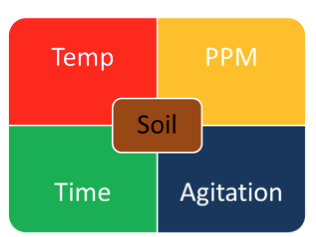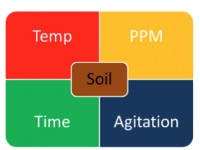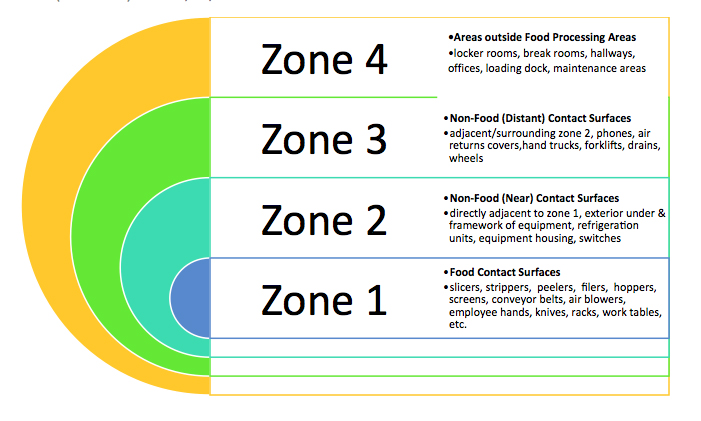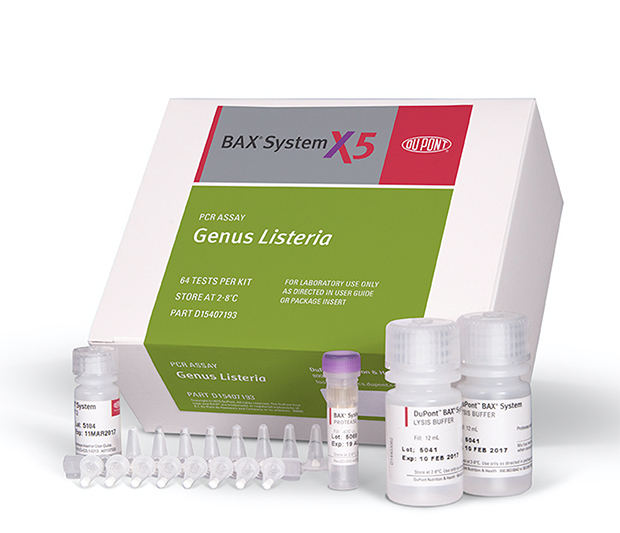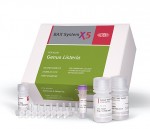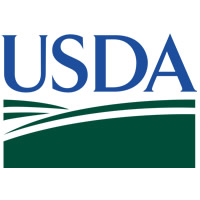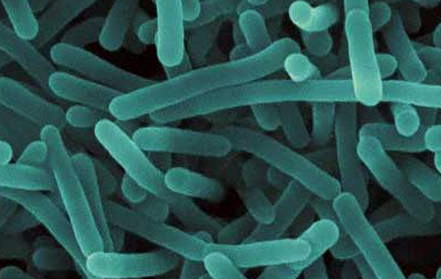Recent recalls and outbreaks associated with Listeria coupled with FDA’s finalization of the FSMA preventive controls rule have heightened the industry’s need to focus on environmental testing programs. The need for a preventive control program with higher resolution is especially highlighted by the government’s increasing use of whole genome sequencing data to more rapidly link human illness to food processing establishments. I work with many customers who simply do not recognize all of the factors that influence their ability to detect Listeria in environmental samples. For many, an environmental sample is collected, shipped to a third-party lab, results are received within two to four days, and few questions asked. Most companies have not invested the time and resources needed to truly understand how each component of an environmental sample impacts their ability to detect Listeria. So what factors should be considered to maximize Listeria detection in the plant environment?
Learn innovative ways to mitigate the threat of Listeria at the Listeria Detection & Control Workshop | May 31–June 1, 2016 | St. Paul, MN | LEARN MOREListeria is a True Survivor
Listeria is inherently a hearty organism that can withstand highly adverse conditions in the plant environment. It is able to survive and grow across a wide range of temperatures, including refrigeration, and it is more tolerant to heat than Salmonella and E. coli. Additionally, the organism survives across a wide pH range, including extended periods in highly acidic conditions, and can survive food processing and preservation with up to 25.5% salt. These traits may result in highly injured Listeria being collected in environmental samples, and requires optimization of the sample collection and analysis process in order for detection and culture confirmation to occur.
Sanitation Programs May Not Destroy Listeria
Sanitation practices are intended to destroy Listeria in the plant environment, but not all sanitizers will be 100% effective. In some cases, sanitizers may not fully kill Listeria, leaving highly injured Listeria that may require an extended lag phase in order for growth and detection during testing. Sub-lethally injured Listeria remains a food safety concern, as the bacteria maintain the ability to recover and flourish in a nutritive environment. Additionally, Listeria readily forms biofilms in the plant environment, which many traditional sanitizers do not effectively remove. Biofilms in the plant environment may maintain low levels of Listeria that may be challenging to detect without the use of a sensitive detection method.
Sample Collection: Choose the Right Tool for the Job
The neutralizing and nutritive capacity of the collection media used with the collection device can have a significant impact on the ability to resuscitate, detect and culture stressed Listeria. When selecting a collection media, it is important to ensure that the media will effectively neutralize the sanitizers used in the plant environment. For instance, peroxyacetic acid and quaterinary ammonia-based sanitizers will not be neutralized well by commonly used collection media such as Neutralizing Buffer or Letheen Broth. Neutralization of the sanitizer in environmental samples is important in order for resuscitation and growth of any Listeria present within the sample. Additionally, use of a collection media that contains nutrients to begin the resuscitation process for Listeria immediately upon collection is also important for detection and culture confirmation of Listeria in samples. Collection media such as Neutralizing Buffer contains monopatassium phosphate, sodium thiosulfate, and aryl sulfonate complex intended only to neutralize sanitizers. Conversely, D/E Broth and HiCap Broth have components to nourish Listeria and facilitate resuscitation in addition to neutralizing sanitizers.
Enrichment Media Determines Recovery & Growth
Enrichment media plays a major role in the speed of recovery and growth of Listeria in environmental samples. Medias that facilitate faster recovery of injured Listeria allow for shortened lag phases facilitating more rapid growth. Enrichment media that facilitate faster recovery and growth allow Listeria to reach the limit of detection for screening tools more quickly. When paired with a highly sensitive method, enrichment media, which foster greater Listeria growth and recovery, can allow for significant reductions in time to results for screening methods. Additionally, faster recovery and growth of Listeria due to enrichment media can increase the likelihood of culturally confirming Listeria found at low levels pre-enrichment.
Not All Detection Methods are the Same
The ability of a detection method to find Listeria in an environmental sample is impacted by two factors: 1) method sensitivity and 2) method robustness in the presence of sanitizers. The more sensitive a rapid test method, the greater the chance of finding low levels of Listeria in an environmental sample. Low levels of Listeria in environmental samples are likely due to the injured state of Listeria in the plant environment post sanitization. Immuno-based rapid methods have a sensitivity of 105–106, DNA-based methods have a sensitivity of 104–105 and RNA based methods have a sensitivity of 102–103. Using an RNA-based method offers 1 to 2 logs greater sensitivity and greatly increases the chance of finding low-level Listeria.1 This can be particularly true when sampling conditions such as collection media or enrichment media are less than optimal for the neutralization of sanitizers and growth and recovery of Listeria.
Another important factor that influences a test method’s ability to detect Listeria in an environmental sample is the method’s ability to amplify and detect the organism in the presence of sanitizers. Most molecular-based methods do not include a sample clean up step resulting in sanitizer being present during the amplification step. For some methods, sanitizers may inhibit amplification, resulting in indeterminate or false negative results.
Confirmation Requires Optimization of the Sampling Process
The ability to culturally confirm a Listeria sample that screens positive is influenced by the entire environmental sampling process. In order to culture confirm samples with highly injured, low-level Listeria, it is necessary to optimize the sample collection media, enrichment media, and confirmation process to provide the greatest likelihood of culture recovery. If Listeria is not adequately resuscitated and able to achieve sufficient growth, the level of Listeria present in the sample post-enrichment may be below the limit of detection for culture. The likelihood of culture confirmation can be increased by incorporating steps such as a secondary enrichment or concentration via IMS capture. Culture confirmation for samples that screen positive on a rapid method can be especially challenging if a highly sensitive test method is used for screening that may detect Listeria at lower levels than culture. Thus, optimizing the environmental sample program is especially important if confirmation of screening results for highly sensitive methods is desired.
Method Sensitivity and Increased Positivity
Employing a highly sensitive screening tool for environmental samples provides a better lens to view risk within the food safety processing environment. Many companies fear that a more sensitive method will result in significant increases in positivity and cost for increased sanitation. In working with customers who have moved from immune-based methods to a highly sensitivity molecular method, I’ve observed an initial increase in positivity followed by a leveling off of low-level positivity after enhanced interventions are taken in the plant. Companies that proactively seek out and destroy Listeria in their plants are then able to maintain low level rates of positivity with routine cleaning measures, while also maintaining the confidence that they are using the best tool available for Listeria monitoring.
Understand Your Risk & Establish a Culture of Food Safety
It is important for food safety professionals to fully consider the hidden risks that may exist in their plant environment due to the environmental sample process masking the true presence of Listeria. Each component of the environmental monitoring process, sanitizer, collection media, enrichment media, detection method and culture process plays an important role in a company’s ability to be able to detect and culture confirm Listeria in the plant environment. Optimizing each step within the environmental sample process allows a company to be proactive instead of reactive. This approach creates a company culture of food safety that can seek out, detect and destroy Listeria in the plant environment, can significantly mitigate risk. The good news is that by incorporating the right food safety culture and making data-driven choices, today’s manufacturer can achieve both short-term dividends of risk reduction as well as a long-term elevation of control of its process.
Reference
- Culture Shift: The New Dynamics of Listeria Environmental Control and Testing. Roka Bioscience, Webinar.



